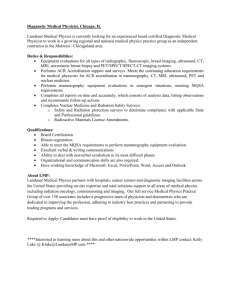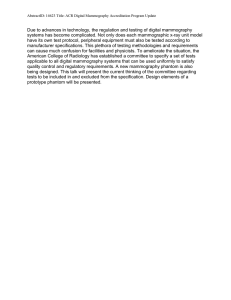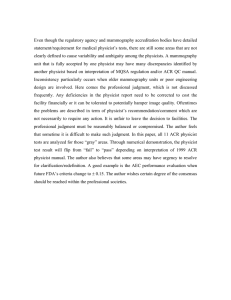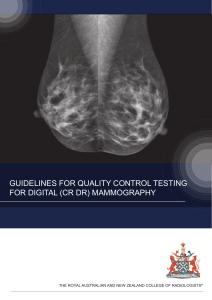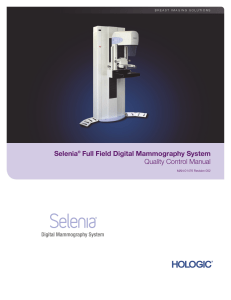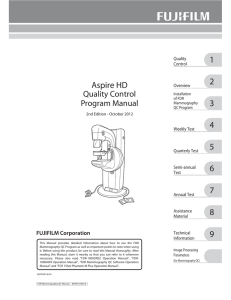AbstractID: 8044 Title: Differing Roles of AEC Performance Testing in Mammography
advertisement
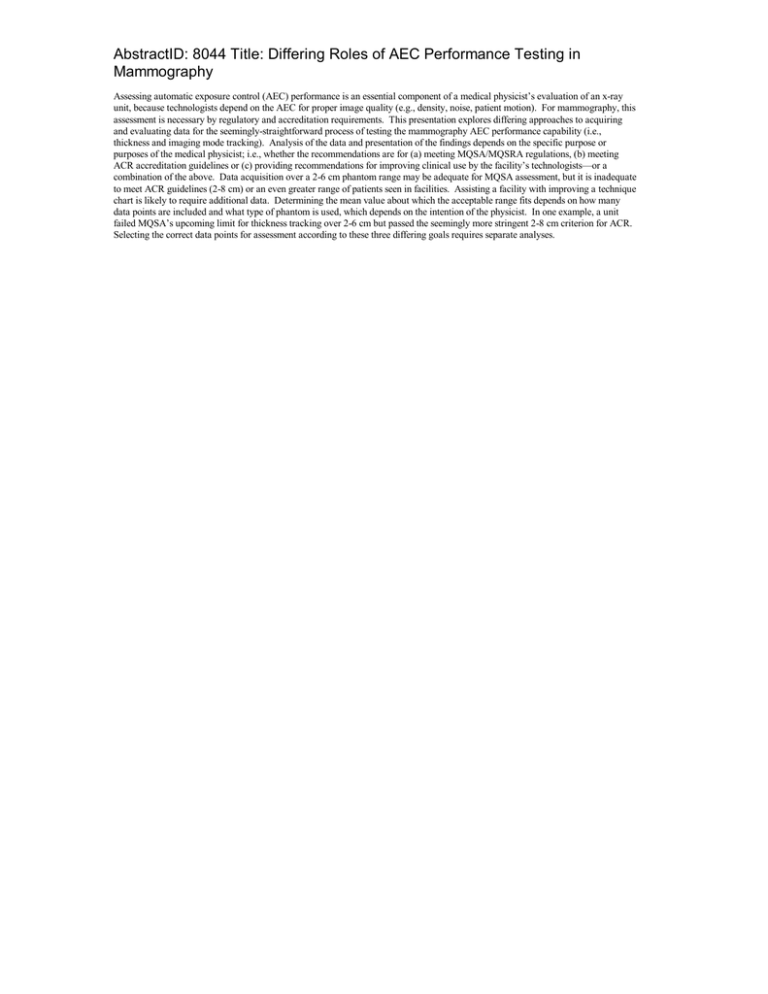
AbstractID: 8044 Title: Differing Roles of AEC Performance Testing in Mammography Assessing automatic exposure control (AEC) performance is an essential component of a medical physicist’s evaluation of an x-ray unit, because technologists depend on the AEC for proper image quality (e.g., density, noise, patient motion). For mammography, this assessment is necessary by regulatory and accreditation requirements. This presentation explores differing approaches to acquiring and evaluating data for the seemingly-straightforward process of testing the mammography AEC performance capability (i.e., thickness and imaging mode tracking). Analysis of the data and presentation of the findings depends on the specific purpose or purposes of the medical physicist; i.e., whether the recommendations are for (a) meeting MQSA/MQSRA regulations, (b) meeting ACR accreditation guidelines or (c) providing recommendations for improving clinical use by the facility’s technologists—or a combination of the above. Data acquisition over a 2-6 cm phantom range may be adequate for MQSA assessment, but it is inadequate to meet ACR guidelines (2-8 cm) or an even greater range of patients seen in facilities. Assisting a facility with improving a technique chart is likely to require additional data. Determining the mean value about which the acceptable range fits depends on how many data points are included and what type of phantom is used, which depends on the intention of the physicist. In one example, a unit failed MQSA’s upcoming limit for thickness tracking over 2-6 cm but passed the seemingly more stringent 2-8 cm criterion for ACR. Selecting the correct data points for assessment according to these three differing goals requires separate analyses.
